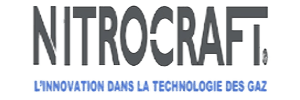With over 15 years experience, Nitrocraft specializes in designing, manufacturing, and marketing on-site gas generators. All of the generators offered by the company use Pressure Swing Adsorption (PSA) technology in combination with Carbon Molecular Sieve (CMS) technique.
3D Additive Manufacturing
Over the past few years there has been an increasing rise of 3D additive manufacturing machines. While the technology was introduced two decades ago, this latest development not only helps companies to straighten their production management, but also enables them to reduce their costs.
There are vast fields of activities, which are likely to soar. Amongst them, the following fields can be mentioned:
- Fast prototyping: Manufacturing of customized parts with low operating costs
- Aerospace: Production of installation template and spare parts
- Medicine: 3D machines are used to manufacture hearing aids as well as an increasing number of prosthesis (dental or missing members)
Positioning of Nitrogen in the 3D Additive Manufacturing
In the additive manufacturing industry, the production phase of selective laser sintering machine - a technique where a laser is used as the power source to sinter powdered metal - has to be realized in an inert environment. That is to say, nitrogen (helium or argon) is injected to reduce the rate of oxygen in the production environment.
The blanketing phase is also known as purge phase. Reducing the rate of oxygen acts as a vital safety component within the process, as it reduces the risk of combustion due to the projection of dust.
Generally, 3D machines operate round the clock until a desired part is completed. This phase is called the construction phase.
For machines that use metal powder, the quality of nitrogen is important as it determines the purge’s time and can influence the machine’s productivity.
The flow rates of the injected nitrogen can reach up to 3 to 5 m3/h during a period of time that can vary from a few minutes to over an hour. That is the reason why the sizing of the installation is primordial.
Nitrocraft Generators
Since 2011, Nitrocraft has carried out many installations focused on the production of nitrogen in the 3D additive manufacturing sector. The large range of products and the ingenious conception of Nitrocraft generators allow the company to meet its customers’ requirements, whether it is to deliver a single machine or many.
In addition, the laboratory of Bongert has placed its trust in Nitrocraft to deliver its 3D manufacturing machines with nitrogen. Bongert opted to install a TERA M010 (fully modular) with a nitrogen receiver and a chain of filters.

This information has been sourced, reviewed and adapted from materials provided by Nitrocraft.
For more information on this source, please visit Nitrocraft.